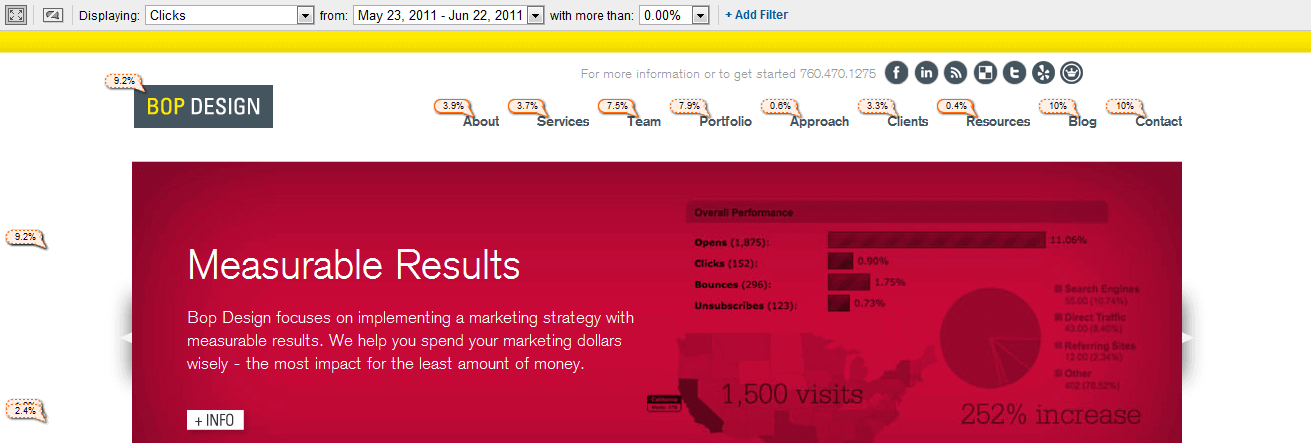Do you feel like most of your decisions are based on “educated guesses” when it comes to website design and content creation? It’s ok, you are not alone. Most website owners use instinct and guesswork to choose their website design, layout, styling, call-to action items and content.
Feel more comfortable by making data driven decisions and let your instincts take a backseat. Many free tools and resources can provide information about what people “like” on your website and the types of actions that lead to conversions. One of my favorite free tools for small business owners, and other people that wear many hats, is Google Analytics. If you haven’t installed Google Analytics on your website yet, I suggest you make this your number one priority. Google Analytics released a relatively new beta report called “In-Page Analytics.” You can find this report under the section named “Content.” This analytics report provides an easy-to-read visual representation of website visitors’ actions. See the Bop Design example below:

Easy-to-Read Reporting
Google Analytics provides a wealth of information at your fingertips. Unfortunately, generating and interpreting Google Analytics reports requires time, patience and SEO knowledge to truly understand website performance. But as you can see from the above snapshot of an “In-Page Analytics” report, this report provides an intuitive, visual representation of the actions taken by webpage visitors. In one quick view, you can see the content and images that are effective in driving traffic through your website.
Navigate Your Website
Don’t stop at your homepage. Within this easy-to-use browser you can navigate to other webpages to monitor other sections’ performance. Is there content, call-to-action items, or images that are performing well on your website? You may want to add these highly clickable items to other parts of your website, retaining visitors on your website for a longer period of time. For sections that produce little or no clicks, consider replacing that content with something new. Don’t be afraid to try new content or a new call-to-action. Sometimes the most dangerous thing you can do is nothing at all.
Goal & Conversion Tracking
Explore the use of Goals in your Google Analytics account. Goals are an easy way to track and monitor conversions from your website. For those of you already using Goal tracking, you will find the percentage of visitors who converted from these clicks within the In-Page Analytics report. These metrics provide you with a wealth of information on the website items that resonate with your “ideal” web visitor. For instance, do more people convert from your product webpage or your demo webpage? If you are driving more conversions from demo webpages, consider adding links to these demos on other webpages. Continuously monitoring Analytics and acting on pertinent information will make your website a better conversion generator.
Take an hour to navigate “In-Page Analytics”, get the facts straight, and be equipped to make better informed decisions. Leave the guesswork to your competition.



